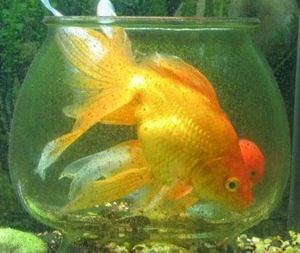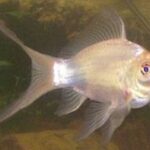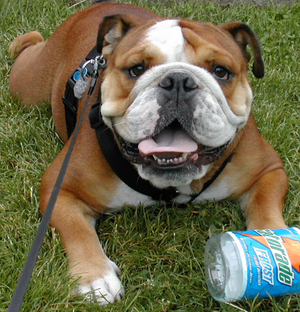The most important thing to remember about keeping a goldfish in a fishbowl is that it should not be done. Goldfish are collectively very large fish and need anywhere from 15 gallons apiece for the smaller fancy goldfish, all the way up to 30-50 gallons apiece for single-tailed goldfish such as Commons, Comets, and Shubunkins. In a league of their own are the very attractive koi, an extremely popular pond fish that takes about 500 gallons to reach its full size of up to 3 feet long from nose to fin. Unfortunately, the low prices and easy availability of these fish have led to a lot of misunderstanding about their care and the inadvertent mistreatment of countless numbers of goldfish.
Many prospective goldfish owners and beginning fish hobbyists subscribe to the well-known myth that fish will only grow to their environment and no more. While it is true that goldfish, amongst others, excretes a growth hormone that stops the fish’s growth when it reaches a certain concentration, it is equally true that the hormone generally stops a fish from growing when it is already too large for its environment. When a fish is kept in a space far too limited for them, it will severely stunt their growth and shorten their lifespan. Depending on the breed, goldfish live on average anywhere from 15-30 years and koi live about 50 years when properly taken care of, and goldfish are amongst the most hardy aquarium fish.
Though it is not suitable for long-term home for your goldfish, there are some circumstances which would require a fish to be kept in a small bowl for a short amount of time. These may include isolating a new or sick fish, moving to a new location, or as a temporary home while new seals are being put on the aquarium. However, be aware that taking care of your fish in a bowl is going to take all lot more work than if that same fish were in a proper aquarium. There likely won’t be room for proper filtration and the significantly lowered water volume will make daily cleaning imperative to your fish’s health.
Setting Up the Fishbowl
Start by selecting the largest fishbowl possible, making sure that your fish has adequate room to swim at least a little. In a permanent aquarium you want something at least twice as wide and four times as long as your fish is adult length; this will likely not be possible in a fishbowl, but can be tolerated for short periods if need be.
Next, if cycled aquarium water or, preferably, gravel or other substrate from an established aquarium are available then they should be used in the fishbowl. While the number of water changes needed to keep ammonia levels down in such a small volume won’t be significantly affected by established colonies of bacteria – “biobugs” – they may be able to help control the water quality to some extent. If filling from tap water, be sure to add in the dechlorinator before introducing the media from an established tank, as exposure to any level of chlorine will kill the bacteria. Avoid placing any kind of decoration in the bowl; rest assured, your goldfish needs the water volume much more than it needs some extra landscaping or a hiding place.
If possible, add in a small sponge filter or any other kind of filtration that will fit in the bowl. Many bowls will not have the space to put any kind of filter, and it is guaranteed that you will not be able to establish sufficient filtration for goldfish as they need about twice the level of filtration that the average aquarium fish needs. The bowl is now ready for you to introduce you fish. If the water in the bowl was taken from the fish’s aquarium then the fish can be put straight into the bowl, but otherwise will need to float inside a bag or other container of its own water for about a half an hour before releasing it into the bowl in order to acclimatize it to the new water.
Care While in the Fishbowl
Now comes the hard part – keeping your fish healthy and de-stressed during its time in the bowl. All it takes to keep this fish in good health in its short-term quarters is a little bit of vigilance to water quality. Water changes will have to be done at least once a day, sometimes more, and will consist of no less than half of the water volume. Especially in high-waste fish such as goldfish, the ammonia levels will climb rapidly no matter what other precautions are taken and the only effective solution is to remove the ammonia and the waste that is producing it. Feed sparingly no more than once a day. Fish are opportunistic eaters and their metabolism is designed in such a way that they will not suffer adverse effects from lower levels of feeding, especially if it’s just while they’re in short-term quarters. More food means more waste and more difficulty keeping ammonia levels down.
While ammonia is a constant battle in small, temporary housing, do not use any kind of ammonia binder and less is the only option to avoid lethal levels in between water changes, such as might be the case during a move when water may not be available when it’s needed. Ammonia binders will not prevent new ammonia from being released into the water but can deprive beneficial bacteria of the food it needs for sufficient periods of time to kill all of the bacteria. Watch your fish carefully during the time it’s in the bowl, and do water changes immediately if you see any kind of redness around the gills or if the fish is gasping at the surface of the water. Move the fish into suitable long-term housing as quickly as possible, and do not put the water from the bowl into the aquarium as it is much more likely to degrade the aquarium water than offer any kind of benefit.



